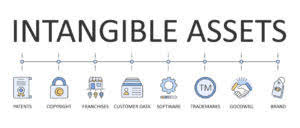
We understand what direct material costs are so now it’s time to talk about the formula used to calculate them. Calculate direct materials costs when doing a physical inventory and adding up all the opening and closing direct materials for some time. Effective supply chain management (SCM) practices can significantly impact manufacturing costs. Efficient SCM involves optimizing logistics, inventory management, and supplier relationships to minimize material costs, reduce lead times, and enhance overall operational efficiency.

Cost Control and Efficiency
The value of these raw materials increases over the production of the product. Raw materials go through any number of types of operations in the course of manufacturing, such as welding, cutting, etc. When figuring out direct material costs, it’s important to distinguish between direct and indirect. Indirect costs are subsidiary material costs, such as shop supply costs, perishable tools and equipment costs. Conversely, glue, sandpaper, or lubricants are indirect materials because they’re used across multiple products and do not become part of the finished good. As a result, these material expenses are accounted for in manufacturing overheads, not material costs.
How to Calculate Total Manufacturing Cost
- When businesses set prices, they look beyond the sum of direct materials, labor, and overhead to include additional factors such as market demand, competition, perceived value, and desired profit margins.
- Manufacturing overhead includes indirect costs like factory rent, utilities, equipment depreciation, and salaries of supervisors.
- Still, indirect laborers might be managers and quality assurance staff, and indirect materials would be the oil used to maintain the sewing machines in a blanket factory.
- The key difference between direct costs and indirect costs is that direct costs can be tracked to specific item, and tend to be variable.
Essentially, it represents the total cost of producing the goods that will be sold to customers. Scaling your production is exciting, but it’s vital to recognize that not all production costs scale simultaneously. As your output increases, it’s crucial to consider the dynamics of specific cost components. Maintaining detailed records of overhead expenses is essential for accurate allocation. The record includes tracking invoices, utility bills, maintenance records, and other relevant documentation. Manufacturing quoting and estimating software helps determine the cost of a project’s materials.
- The three primary components of total manufacturing cost are direct materials, direct labour, and manufacturing overheads.
- When looking at total manufacturing cost, you might not only learn that the materials being bought are too expensive, but also that excessive quantities are being bought unnecessarily.
- Though there’s no direct labor formula to follow, calculating direct labor is the most straightforward part of the calculation.
- The direct labour hourly rate is the sum of all wages, plus payroll taxes and fringe benefit costs for the period.
- To determine the total cost of manufacturing for a specific period, businesses must first compile the expenses incurred from direct materials, direct labor, and manufacturing overhead.
- However, it is important to accurately track and record the accounting costs for the production process to ensure the accuracy of the calculation.
- Based on our calculation, we also identify the material prices as a crucial cost factor, posing a major share of the overall cell cost.
Free time tracker
This helps in understanding production expenses and managing budgets effectively. Another important cost measure is the marginal unit cost which reflects the costs to produce another unit of output. It is possible that reports of very low battery production costs5 refer to marginal costs instead QuickBooks of the full costs.

The user can choose from three area types (normal, laboratory, and dry room), each modeled with different operating and fixed costs that can be defined by the user. Additional area factors, such as machine operating and intermediate storage areas, are included in the calculation of the total shop floor area. Although these costs may not be directly allocated to a specific product or worker, they are crucial for manufacturing. Calculating manufacturing overhead costs involves consolidating all relevant expenses incurred during the specified period. Calculate manufacturing overhead costs by summing up your facility’s total manufacturing cost formula indirect expenses.

The Complexity of Indirect Costs
- Manufacturing costs are the prices incurred during the manufacturing process.
- As a manufacturing business owner or stakeholder, you constantly strive to improve pricing strategies and enhance the efficiency of your operations.
- For instance, cutting the NMC811 prices by half enables an overall cell cost reduction of 25% (around 13% in the case of LFP).
- These terms encompass the costs incurred in producing goods, including direct materials, direct labor, and manufacturing overhead.
We’re firm believers in the Golden Rule, which is why editorial opinions are ours alone and have not been previously reviewed, approved, or endorsed by included advertisers. The first case study involves a flat wound prismatic hard case cell (PHEV2 format52), while the second case study focuses on the 4680 cylindrical cell format pursued by Tesla and others. Supplementary Tables A1 and A2 provide an overview https://x.com/bookstimeinc of the geometric cell data.
